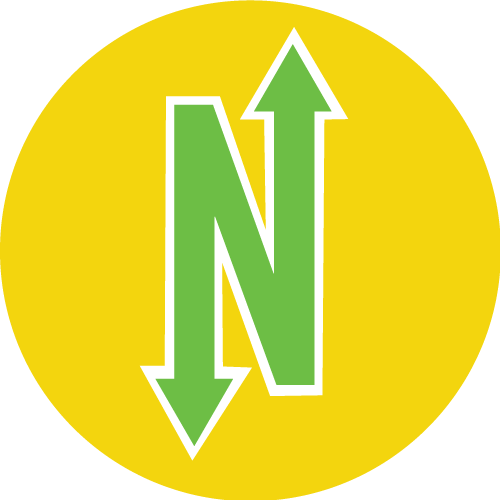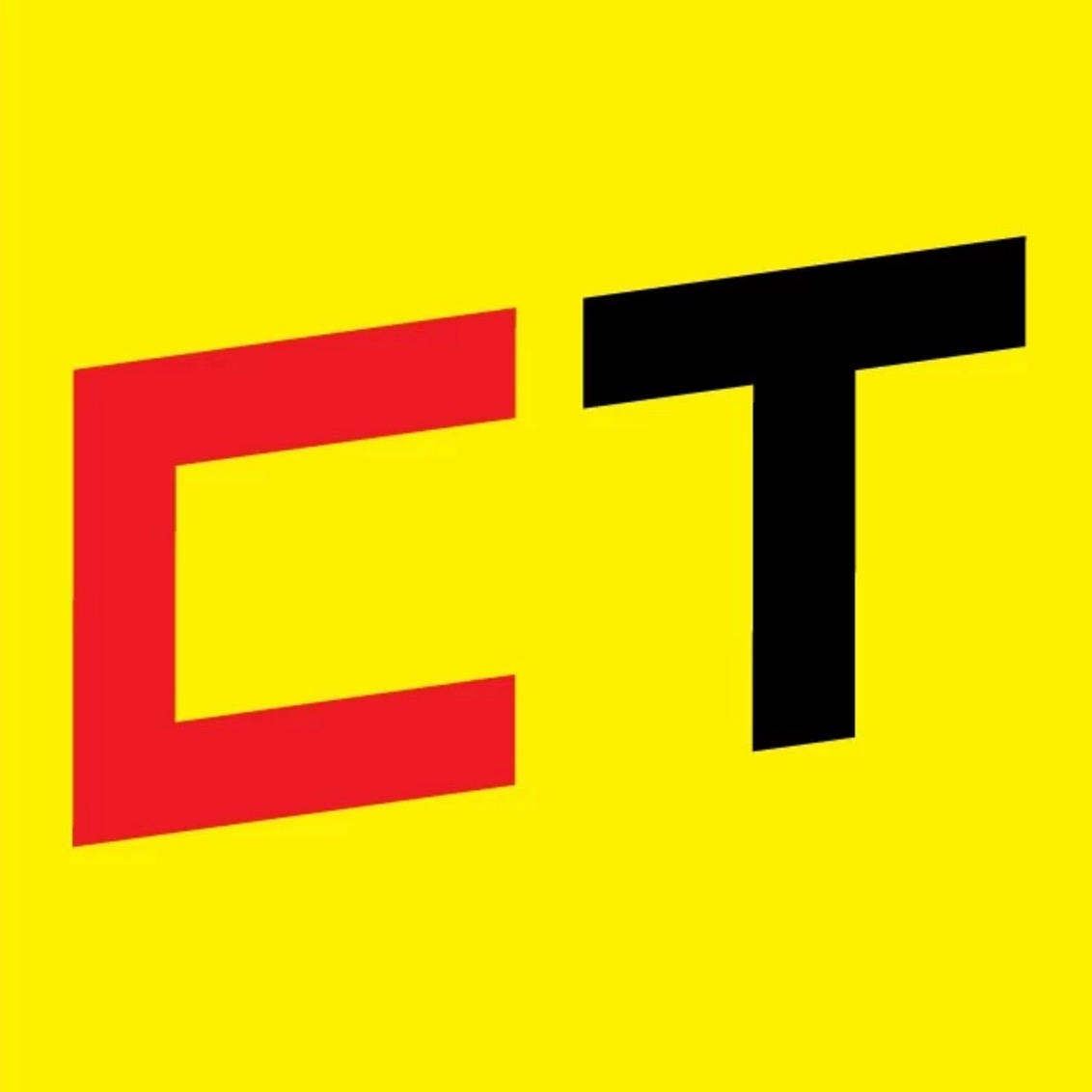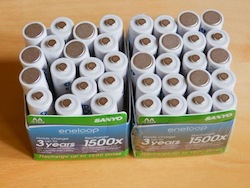29 April 2024
Small Kitchens
Tools for Possibilities: issue no. 84
Once a week we’ll send out a page from Cool Tools: A Catalog of Possibilities. The tools might be outdated or obsolete, and the links to them may or may not work. We present these vintage recommendations as is because the possibilities they inspire are new. Sign up here to get Tools for Possibilities a week early in your inbox.
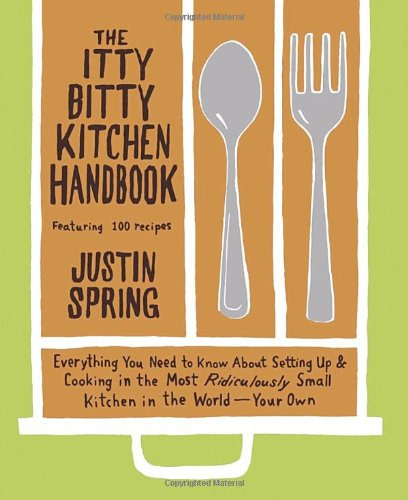
How to cook in small spaces
The Itty Bitty Kitchen Handbook
I happened across The Itty Bitty Kitchen Handbook at the local library, and the subtitle (“Everything you need to know about setting up and cooking in the most ridiculously small kitchen in the world: Your own”) caught me instantly. The cute cover suggests charm over content, but the book itself doesn’t waste a paragraph. It’s pithy, insightful, inspiring, and entertaining.
Justin Spring grew up on a boat, with a kitchen even smaller than mine — essentially a camp stove, an ice chest, and a bucket. He has huge insight into the problems of small kitchens, including the “shut-off point” where clutter stops most food preparation and the local takeout place gets a lot of business.
He is not hesitant to make solid, practical suggestions, and includes websites for sourcing. He weighs in on everything from the best tool cabinet to repurpose for a kitchen, to the best sources for cheap, lead-free, by-the-stem crystal.
This is a truly holistic guide to getting the most possible use and enjoyment from a tiny kitchen. It includes 100 recipes tailored for the small kitchen (“one-pot, toaster oven brownies”).
I have only had this book for a week, but it has inspired one full day of kitchen cleaning (!) and doubled the number of meals I eat at home. It is not comparable to anything else I’ve seen, either on the web or in print: no glossy photos of gleaming granite countertops, no vague, sentimental, market-friendly prose. The closest thing I’ve seen was Mark Bittman’s guide to stocking a minimalist kitchen, but that was four pages and this is over two hundred.
If you are struggling with a tiny kitchen and have almost given up on eating at home, this book is a lifesaver. If you want to eat well, eat healthily, entertain occasionally, and generally live like a normal person despite your itty bitty kitchen, I can’t recommend it enough. — Tricia Postle
And Also A Quick Word about Blenders
The best new blenders will now do the work of mixers and food processors– and in itty bitty kitchens, where limited counter space cuts down on the possibilities for countertop appliances, multitasks of this sort are particularly valuable. Nearly any blender will do for basic blending tasks (for ten years I managed very well with a used bar blender purchased for $5 at an Episcopal Church tag sale; I have no doubt it blended up many a daiquiri before it came into my life.)
- The Refrigerator
Consider washing out your refrigerator interior with a deodorizing solution of baking soda and water and (after unplugging the appliance) cleaning the coils on the back– they attract dust, which interferes with the refrigerator’s ability to cool and thus drives up your energy costs. If the refrigerator has wire shelving inside, install sheets of plexiglass over them– they will clean up easier, and your food items won’t topple over so much. Just take the measurements to a hardware store and have the inexpensive Plexiglas cut to order. - Arrange it in a cook-friendly way. Try consolidating all your food into one cupboard or area so that you know what you have at a glance, and keep that list of your staple items handy—preferably in a clear plastic sleeve on the cupboard’s inside shelf. In elevated cabinets holding many small items, consider buying stepped shelving for visibility all the way to the back. (Incidentally, you canmake your own stepped shelving by cutting 2 x 4 lumber to fit, stacking it as needed.) If you are a short person (or your cabinets are up high), consider buying yourself a foldaway step stool so that you have access to every last inch of IBK space.
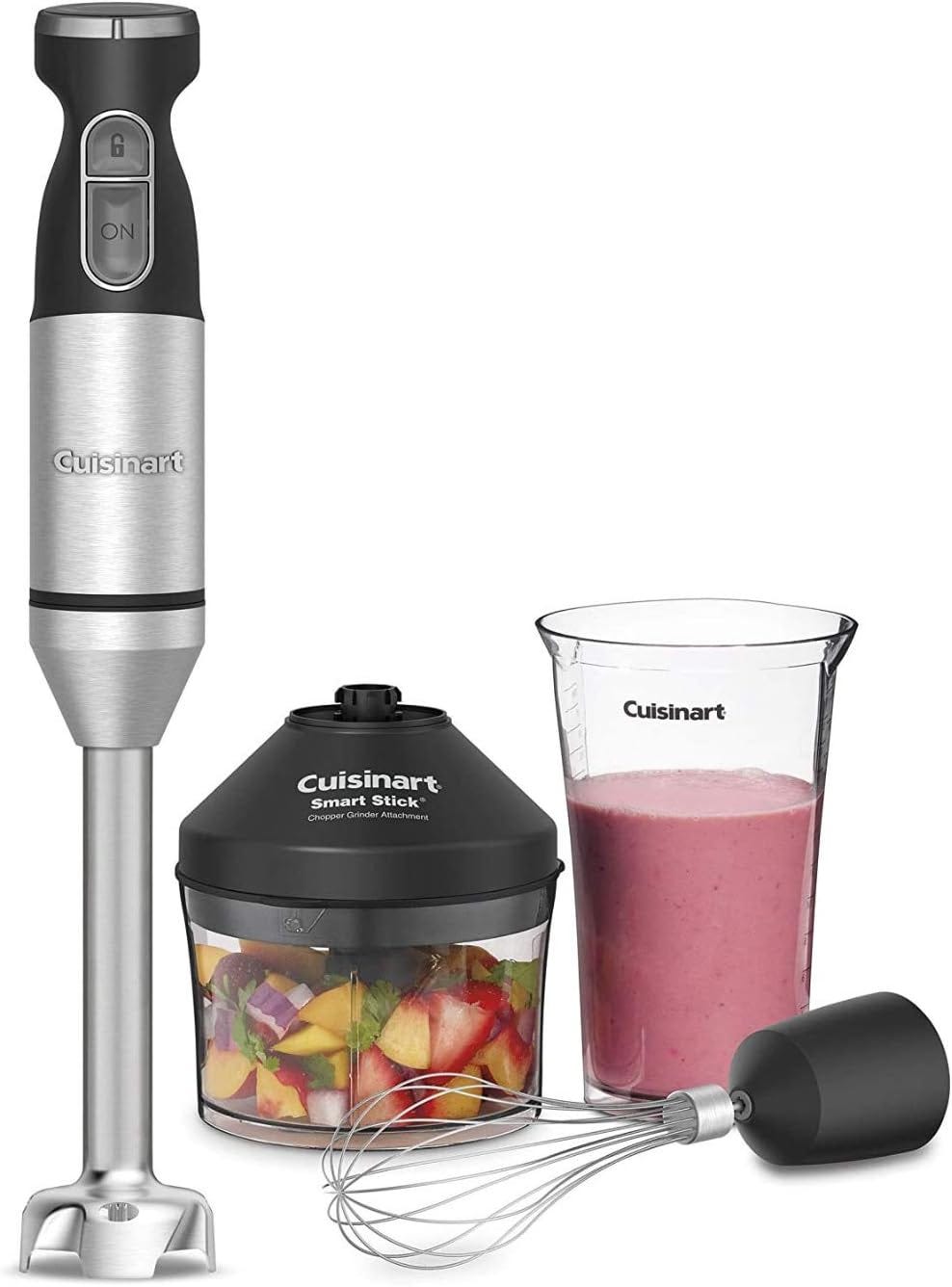
Better than a blender
Cuisinart Smart Stick Hand Blender
I hate most kitchen gadgets with a passion. Seeing things like an avocado slicer, mango corer, or left-handed inverted egg whatsizinger give me the hives. For the longest time, I prided myself on being able to do the most with the least in the kitchen.
I’m saying all this because I wanted to convey just how hard it was to buy the Smart Stick a year ago on the recommendation of my wife. Normally blenders are hard to clean, bulky, loud, and can only be used for low-viscosity liquids; if the mixture is too thick, the blade just whirs uselessly.
The Smart Stick solves all that. It takes up virtually no space. It is easy to clean. Instead of scrubbing out a blender, you just pop off the Smart Stick’s head, so it can be cleaned in eight seconds under running water. It’s impressively powerful and can be jammed full force down into a glass of ice to chop it up quickly. Yet, it’s still much quieter than a blender. The measuring cup it comes with is also well designed to break up the vortex the blender creates.
The Smart Stick is the cheapest and most basic hand blender I could find. Others come with whisks and choppers and brushed metal finishes, but I think the regular head works just fine. I found that the Smart Stick did 150% of what I’ve used a blender for and 75% of what I used a food processor for.
It’s very versatile. No more “pour boiling hot broccoli soup into blender to cream it, then pour back into pot.” You can use the Smart Stick right inside a stockpot on the stove. You can use it on thicker foods because you can stir and mash while blending, continuously bringing new material into the blade as opposed to a stand blender’s reliance on gravity to find unblended parts.
Making hummus, salsa, applesauce, and pesto went from “giant mess” to “easy.” Making smoothies went from “big production” to “two minutes.” Guacamole and whipped cream turn out wonderfully smooth. Margaritas can be made right in the pitcher. Almond butter can be made without too much trouble. I imagine this would also be a lifesaver for making baby food.
There are some downsides: It only has one speed (high!), so you have to be careful and use it in bursts if chopping ice, as it will happily sling iced coffee circumferentially around your kitchen in a ten-foot radius if you get too enthusiastic. You also have to be careful using it with plastic bowls as the metal head can punch through the bowl bottom if you push it too hard. The blade is SHARP. It’s not really suitable for use by children (or klutzy adults). If you need to clean around the blade’s backside with a finger, REMOVE the head from the motor first.
Again, I really really wanted to hate this thing and didn’t buy one for the longest time because I considered it useless. Now it’s the only electric kitchen tool that remains permanently plugged in on my counter other than a Kitchen-Aid six-quart mixer. — Jon Braun
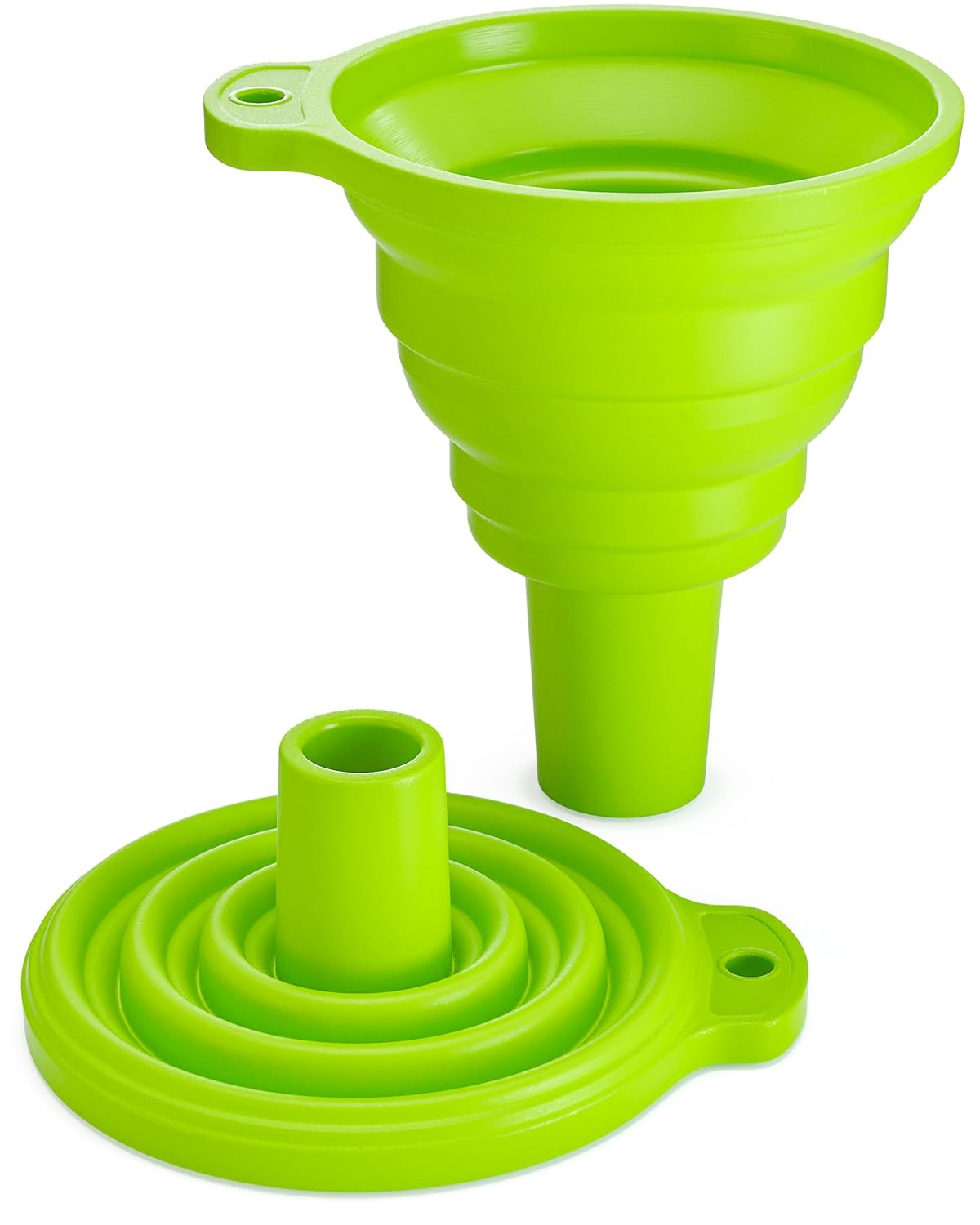
Space saving funnel
My kitchen is on the small side, which means every inch of space must be efficient and tidy. While most funnels are bulky and take up valuable room, this one is compact enough to fit in a studio-size kitchen or be a welcomed addition to any camping pack.
The accordion-style pleats not only allow you to collapse the silicone funnel so it fits neatly even in a shallow drawer. The pleats also allow you to adjust the height and width of the funnel for pouring into various-sized containers.
Since the funnel is made of high-quality silicone, it is dishwasher safe and heat and cold resistant, making it more durable and longer-lasting than plastic funnels. Other potential uses: changing your car’s oil or adding washer fluid. If you plan to use it in the garage, of course, I’d recommend getting a second one. — Kelly Spitzer
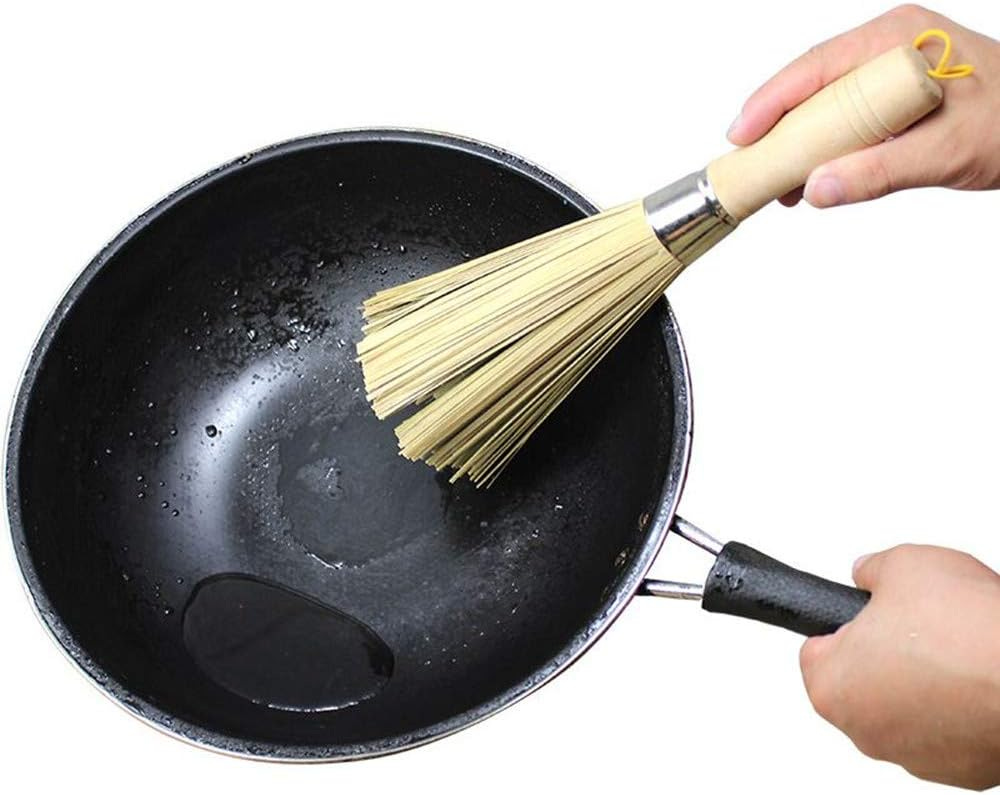
Easy, no-soap wok and pan cleaning tool
I use well-seasoned cast iron and carbon steel pans for the better part of my cooking. To clean them, I’ve used the same bamboo wok brush I bought at a corner market in Sacramento in 1990. I’ve been thinking of buying a new one, just so I can phase it in over a few years while I slowly retire the original. It only takes a few swishes around the inside of the pan with hot water (no soap!) and a rinse to clean a pan. In the time I’ve been using it on my iron and steel pans, including the wok I use occasionally, I’ve gone through countless sponges, scotch-brite pads, and those looped-plastic scrubbies that I use on stock pots etc., all of which get pretty hinky once put into use and have to be run through the dishwasher to get free of food particles. It also looks dignified and fine sitting on the countertop by the sink, has just gotten more seasoned, and never needs more than a rinse to get clean. The edges of the cane bristles are pretty blunted by now and a new one might work better for attacking the occasional nuclear cooking mess. On the other hand, it’s gentle enough on the built-up seasoning in my pans that they keep getting non-stickier and shed scorched cheese like schmutz on teflon.
The brush I bought way back when has flat bristles, about 11 inches long by 3/16 wide, and stouter than most of the wok brushes I’ve seen recently in Asian groceries. I can’t imagine that there’s been much innovation in wok brush technology in the last 3000 years, but quality is probably inconsistent on an item like this, even from the same seller. Unless you have access to Asian markets and can shop around while you’re out making your weekly durian run, Amazon has a variety to choose from, all about $7.50 with shipping. The Wok Shop seems to be reputable, but it might be prudent to order a few just in case yours only lasts as long as a good hamster. — Brian Garber-Yonts
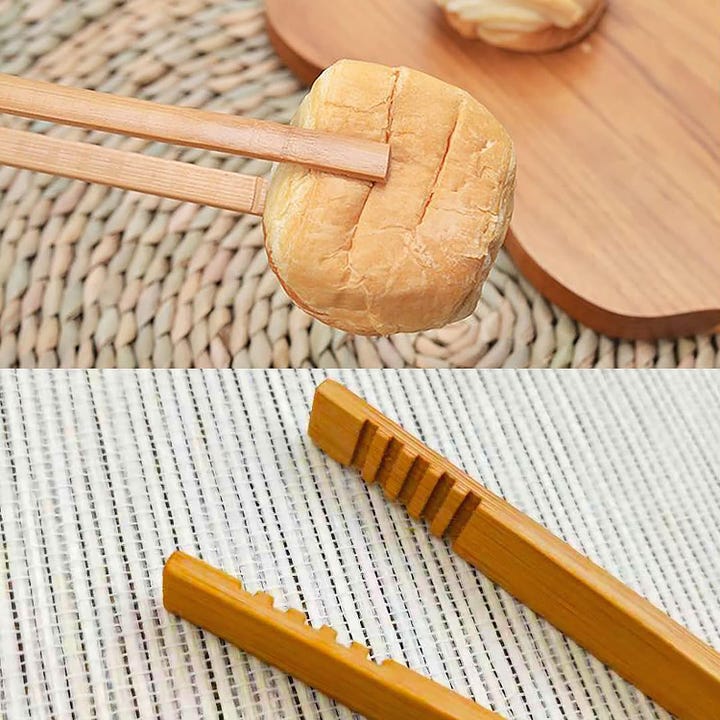
No more burned fingers
My wife brought home a pair of bamboo toast tongs from a “Pampered Chef” housewares party, and I’ve been surprised at how useful they are. We have a standard toaster, and also make homemade bread in small pans. I hadn’t realized how many times I’d been burning myself on the toaster or what a hassle removing smaller slices had been until I started using these.
I guess I find the concept more useful than any particular implementation as I imagine that the adept use of chopsticks would serve the same function. — Mark Crane
04/29/2428 April 2024
Same Energy Snap/Long-sleeved wool t-shirt/Root System Drawings
Recomendo - issue #407
Sign up here to get Recomendo a week early in your inbox.
Long-sleeved wool t-shirt
Wool T-shirts are now my goto shirt. Modern 100% merino wool fabrics are better than cotton even in topical weather. They dry quick, never smell, feel nice. Since I live in perpetual autumn, and work indoors, I wear long-sleeved wool t-shirts. Logo-less brands, such as Meriwool and Merino.tech are not expensive ($49) and offer a long sleeved T in three weights from light to heavy, and many colors. — KK
Hand-drawn root systems
I’ve been seeing this image collection of Root System Drawings around the Internet, and they’re so cool and beautiful I feel compelled to continue sharing them widely. I don’t know much about the university or research behind it, other than they are located in the Netherlands, and that the drawings are the result of 40+ years of root system excavations across Europe. There is something about the symbolism of trees, plants and roots that I can’t put into words but resonates deeply, fostering a connection to both the Earth and my spirit. — CD
Connections for photos
I play the NY Times’ Connections game every day, where the objective is to organize 16 words into four groups, with each group containing words that are connected to each other in some way. A game called Same Energy Snap is like Connections, but for photos instead of words. In this game, you are presented with a 4×3 grid of images, and your task is to find pairs of photos that share a similar vibe or “energy.” — MF
Buy Movie Memorabilia
Propstore.com consigns and sells entertainment memorabilia, like props, costumes, posters and other collectibles, through both Live and Online Auctions. I have not purchased or bid on anything (yet), but I enjoy browsing the website for doses of nostalgia. This weekend there is a live auction of rare and collectible posters, and I pinned some of them for design inspiration. — CD
Quick plant identification
The built-in AI in the iPhone is now so good that you can use it to quickly identify plants, flowers, and many birds. Take a photo of your target, open it in Photos, and swipe it up. At the top of the meta information will be the species or common name. If it doesn’t know it, it gives you one button to “look up” that will usually give you an answer. It’s just about as accurate as the dedicated Seek app I was using before. — KK
The Mind (1964)
The Life Science Library was a set of 26 books published in the 1960s. Each book focused on a single topic, such as weather, the human body, or planets. My family had a set when I was a kid, and I studied them obsessively. I was as fascinated by the incredible design as I was by the text and images. My favorite of the set was The Mind, published in 1964, which explored the mysteries and complexities of perception, memory, learning, mental illness, psychoanalysis, and the nervous system. While much of the information has been superseded by later discoveries, it introduced me to many things that have stuck with me my entire life: Ames rooms, Louis Wain’s kaleidoscopic cat art, and the stunning William Kurelek painting, The Maze. Out of print, but used copies are available, and you can view it at the Internet Archive.— MF
04/28/2425 April 2024
Future Eclipses/Italy’s Nomad Visa/Death of ExOfficio
Nomadico Newsletter #101
A weekly newsletter with four quick bites, edited by Tim Leffel, author of A Better Life for Half the Price and The World’s Cheapest Destinations. See past editions here, where your like-minded friends can subscribe and join you.
Planning Future Solar Eclipse Viewings
I had a few bizarre minutes of totality on a beach in Mazatlan last week and the latest total solar eclipse was a fantastic experience. If you’re looking to make travel plans to catch a future one, you’ll need to head out of North America for the next couple of decades. Upcoming total eclipse viewing opportunities will be Iceland/Greenland, Spain/northern Africa, Australia/New Zealand, and Botswana/South Africa. See a full list here that goes beyond 2030.
A Travel Power Strip for Europe
I often travel with a portable travel power strip for places that don’t have enough outlets, but that problem is especially prevalent in Europe where double outlets are a rarity and buildings can be much older. So when I head to Spain in May, I’m packing this travel power strip with a European plug so I won’t have to pack an additional adapter. The four-foot cord wraps around the base and there’s a strap to hold it together, so it packs up tight.
Italy’s Digital Nomad Visa is Live
Italy’s digital nomad visa is officially available as of this month, though obtaining one looks to be far from simple according to this article. You need a stack of documents including proof of income, hefty health insurance, proof of accommodation in Italy, and a criminal record certificate. As with most of these, however, there’s a fatal flaw in the “proof of employment” requirement that seems to eliminate the largest pool of potential applicants. You must “submit a declaration signed by their employer before any visa will be granted.” Time will tell if we can submit one on our own behalf or if this is a deal breaker for the self-employed and the solopreneurs.
The Death of ExOfficio
I started traveling decades ago, so I’ve got a lot of ExOfficio clothing in my closet. The items were uncannily long-lasting, still looking good after 20 or 30 trips. I say “were” because the brand got bought out by the Newell Rubbermaid conglomerate a few years ago, the makers of Sharpies, trash bins, and toasters. ExOfficio has now devolved into an underwear-only brand: read the sad story I wrote back in February here. It gets worse though: their closest competitor, UK-based Craghoppers, announced this month that they are pulling out of the U.S. market, despite this historic market share opportunity opening up. Buy up inventory while you still can at their U.S. site through April 30.
04/25/2424 April 2024
What’s in my NOW? — Matt Rutherford
issue #176
Sign up here to get What’s in my NOW? a week early in your inbox.
DJ, newsletter writer, optimist. Making people smarter and happier. My weekly email is crammed full of tips for a better life – and a musical recommendation 🎧. — Matt Rutherford
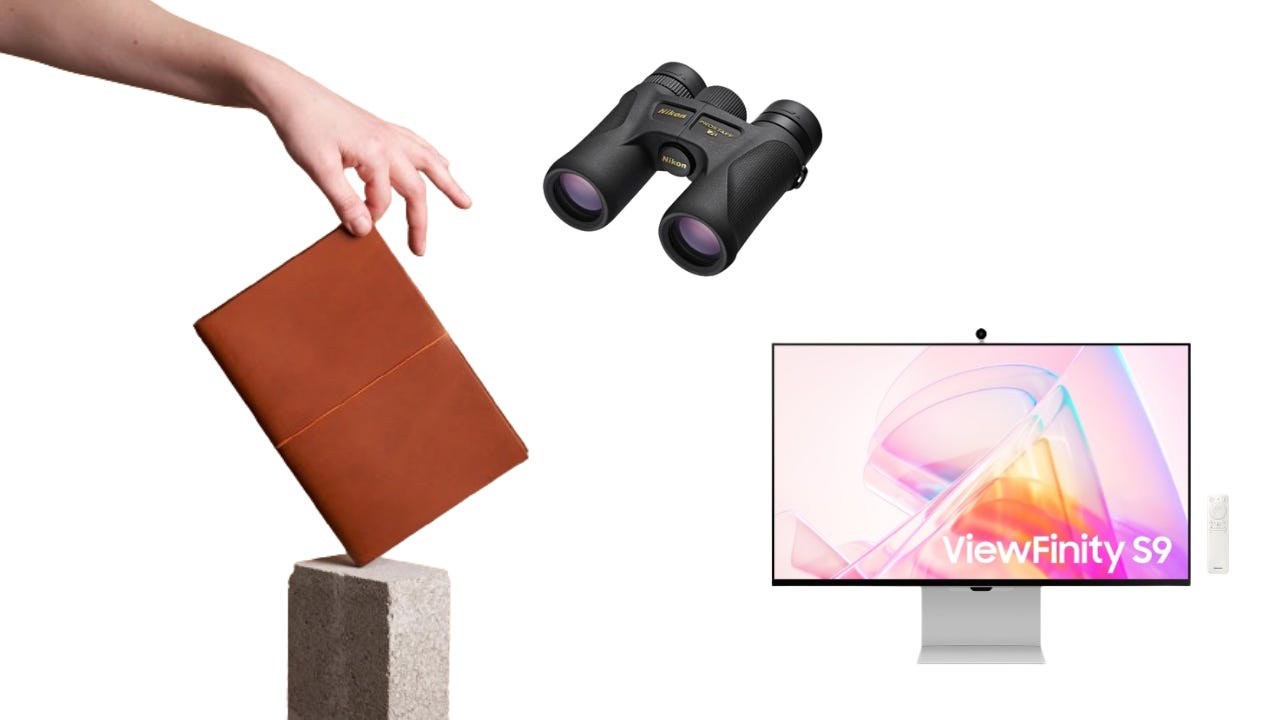
PHYSICAL
- Paper Republic Grand Voyageur XL Leather Journal — I’m a firm believer in hand writing notes to make them stick. Whilst I like drafting things online, I use disposable fountain pens to gather my ideas and record memories on squared paper.
- Nikon Prostaff 7S Binoculars — I recently moved near the sea, and my wife bought me these binoculars. I get an immense amount of joy watching boats sail in and around the Dublin Bay area.
- Samsung Viewfinity S9 Display — I’ve come to the conclusion that the monitor set up that works best for me is one screen, with lots of resolution (at least 4K). I’ve tried curved screens, dual monitors and even triple displays, but getting the most real estate right in front of my eyes works best. This one is the sweetspot in terms of function, size, features – and it has a great webcam to cut down the connections & cables.
DIGITAL
- Ghost — This newsletter/website platform has revolutionised the way I work, cutting down the amount of time spent fiddling and fixing sites and helping me focus on writing content and hitting publish. It hasn’t fixed my imposter syndrome, but it has helped with procrastination.
- Magnet — With all the screen real estate, you need a great window management tool. Magnet is the tool that helps me arrange everything I need in front of me. For a few dollars, this gives me ALL the options for moving windows into the right place, and hotkeys to speed things up. Invaluable software.
INVISIBLE
Fail we May, Sail we Must
Advice for any creator who needs to move forwards.
04/24/2423 April 2024
Hole in the Heart / Hattie & Hudson
Books That Belong On Paper Issue No. 11
Books That Belong On Paper first appeared on the web as Wink Books and was edited by Carla Sinclair. Sign up here to get the issues a week early in your inbox.
A MOVING AND REFRESHINGLY HONEST LOOK AT RAISING A CHILD WITH SPECIAL NEEDS
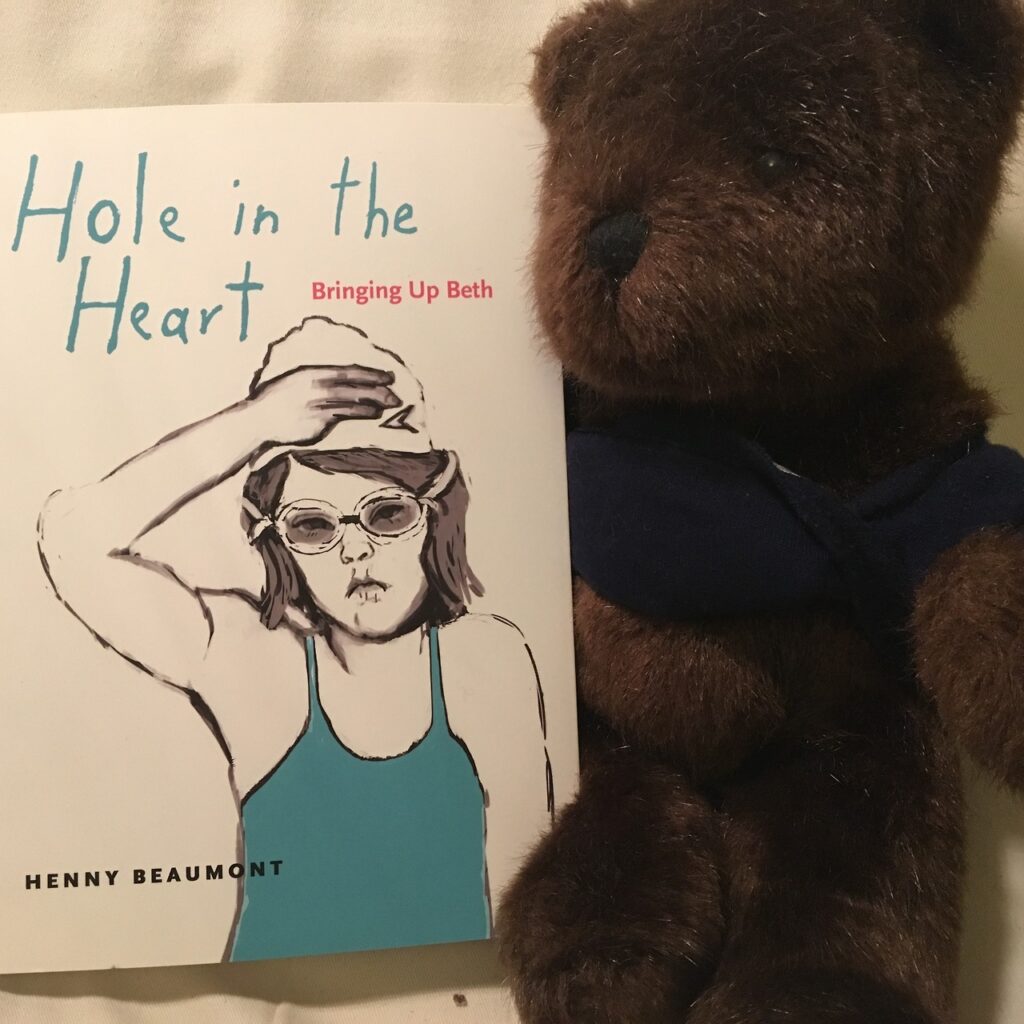
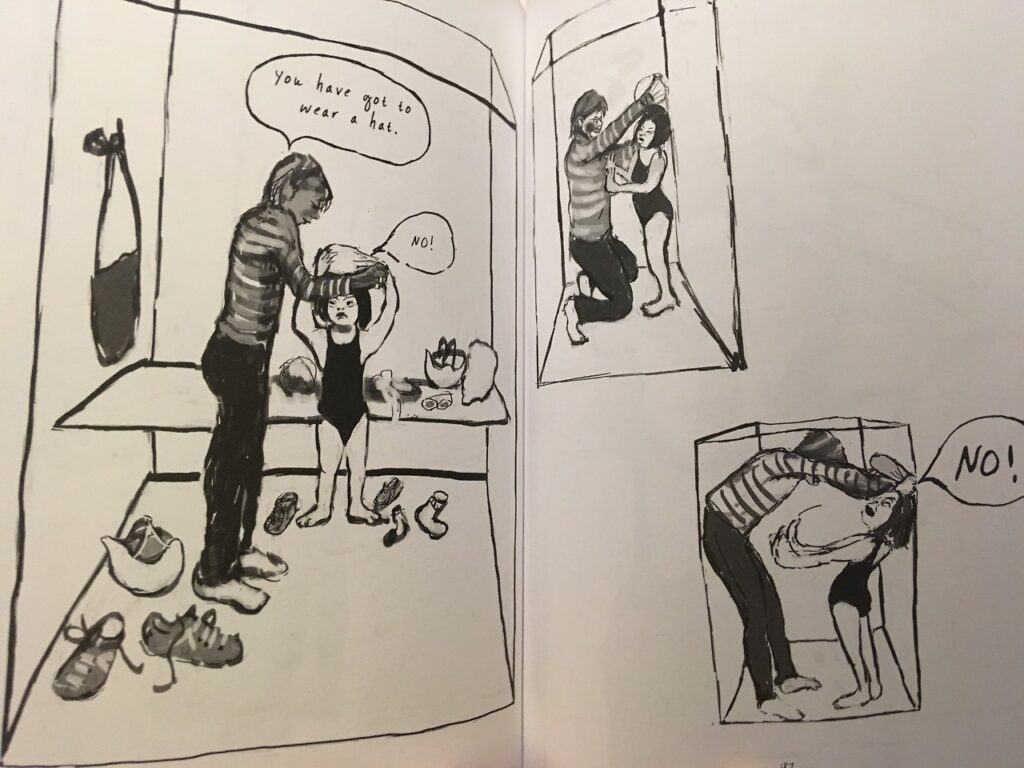

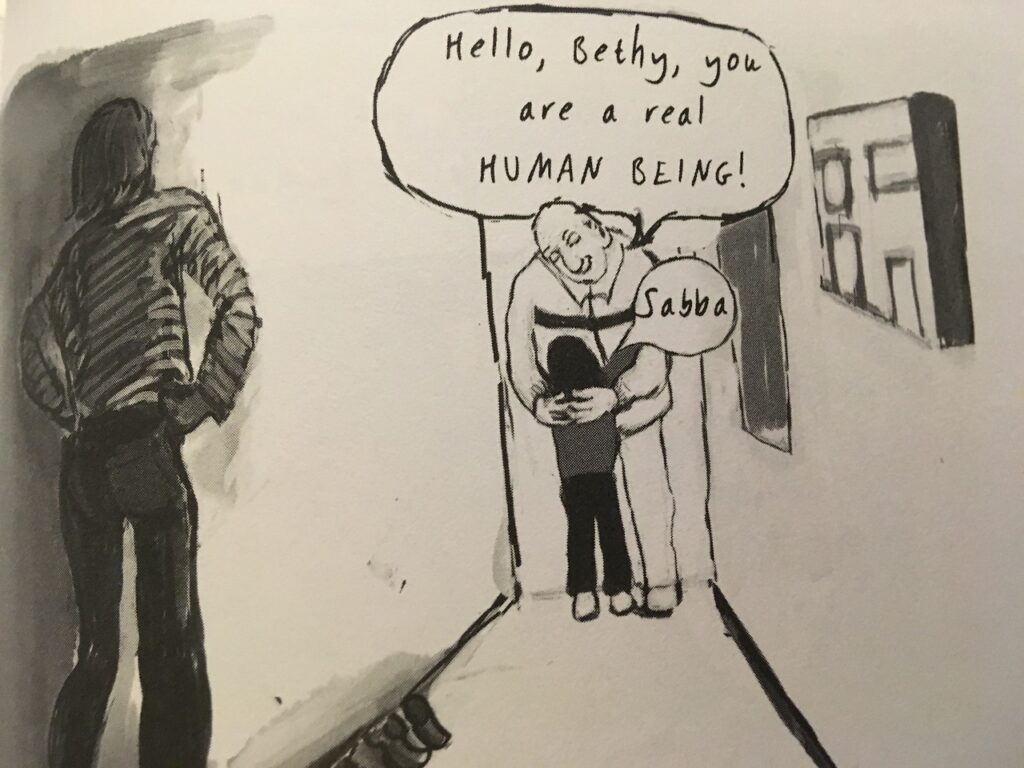
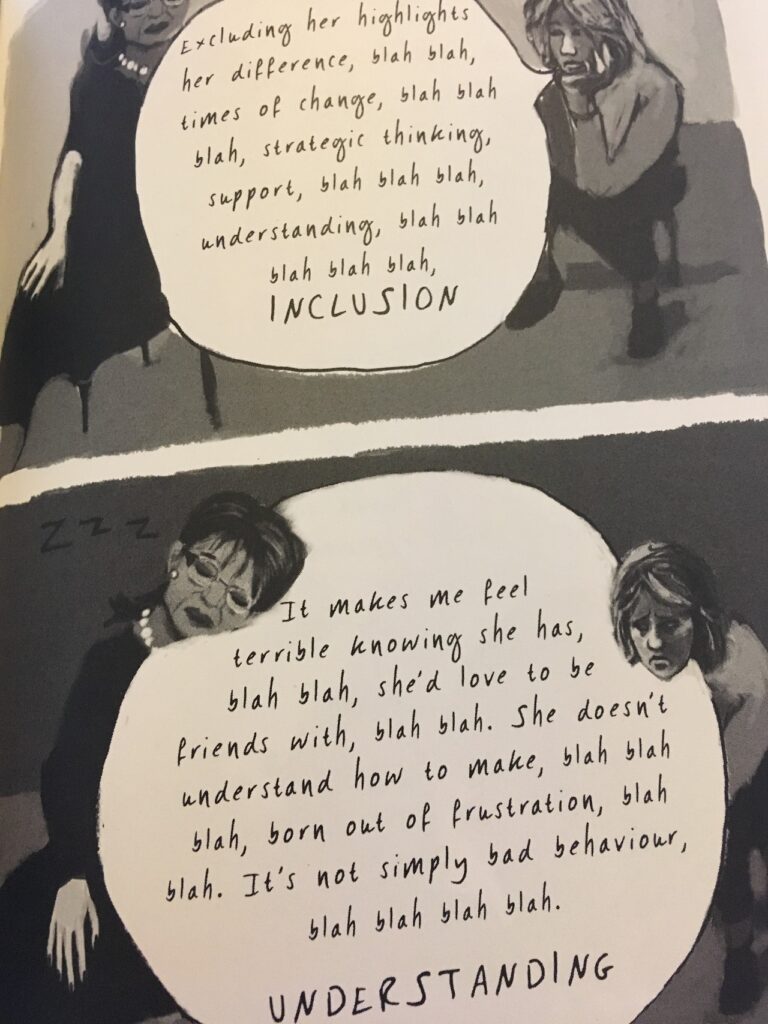




Hole in the Heart: Bringing Up Beth
by Octavia E. Butler (Author), Damian Duffy (Adapter), John Jennings (Illustrator)
Penn State University Press
2016, 288 pages, 6.8 x 0.8 x 9.5 inches, Paperback
This isn’t an easy read, but it’s an important and memorable one. Hole in the Heart, a memoir about giving birth to a child with Down syndrome, expresses anger, frustration, guilt, and many other parenting emotions. The book is moving and feels searingly honest, for instance when it explores Beaumont’s ambivalence about the outcome of her daughter Beth’s heart surgery. She struggles with the thought that it might not be such a terrible thing if Beth doesn’t make it.
The colors are starkly monochromatic, but Beaumont does expressive, figurative things with them that communicate emotional depths. This includes crying fat tears that threaten to drown her, or showing differences in moods using shadows.
Parents are under such pressure to be perfect, including saying all the right things. It’s brave of Beaumont to give voice to such complicated and difficult feelings in Hole in the Heart.
– Christine Ro
A LITTLE GIRL AND HER COLOSSAL FRIEND TEACH A MONSTER-SIZE LESSON ABOUT PREJUDGING OTHERS

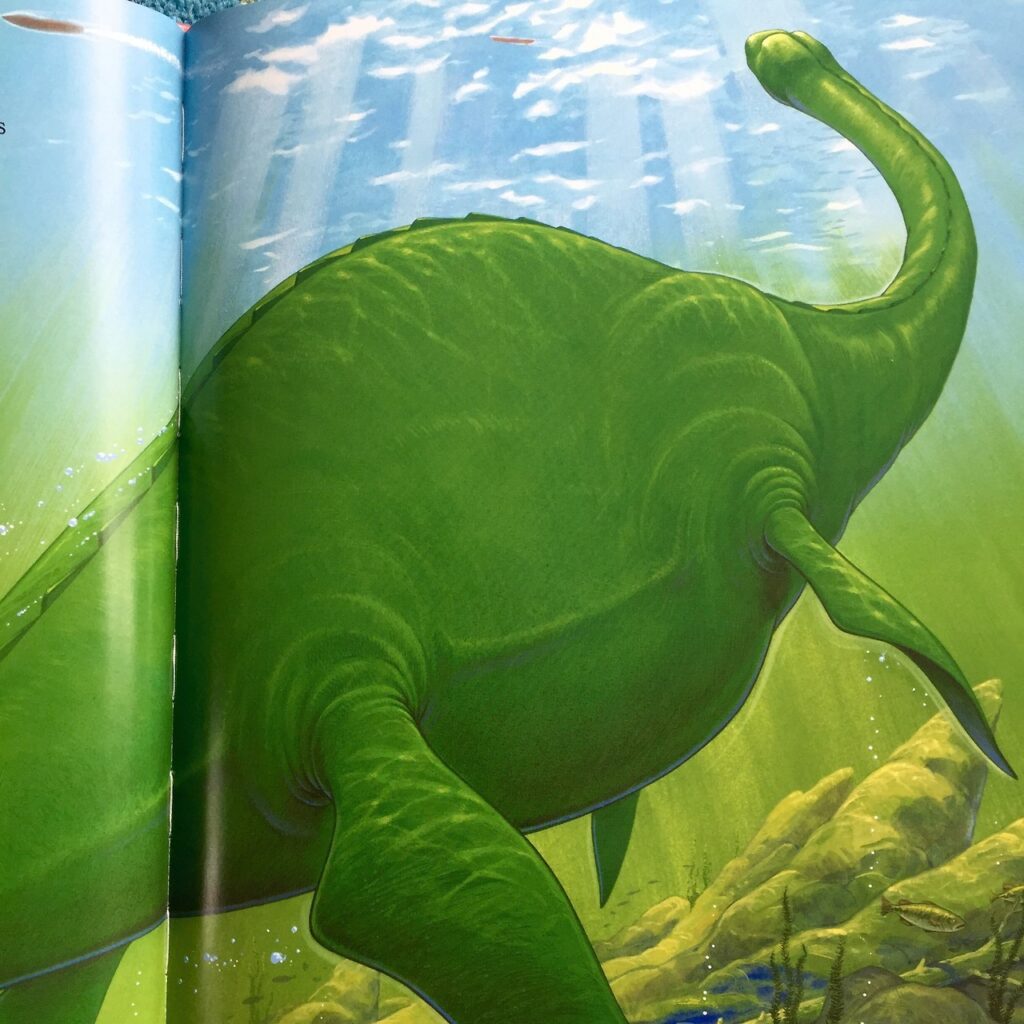

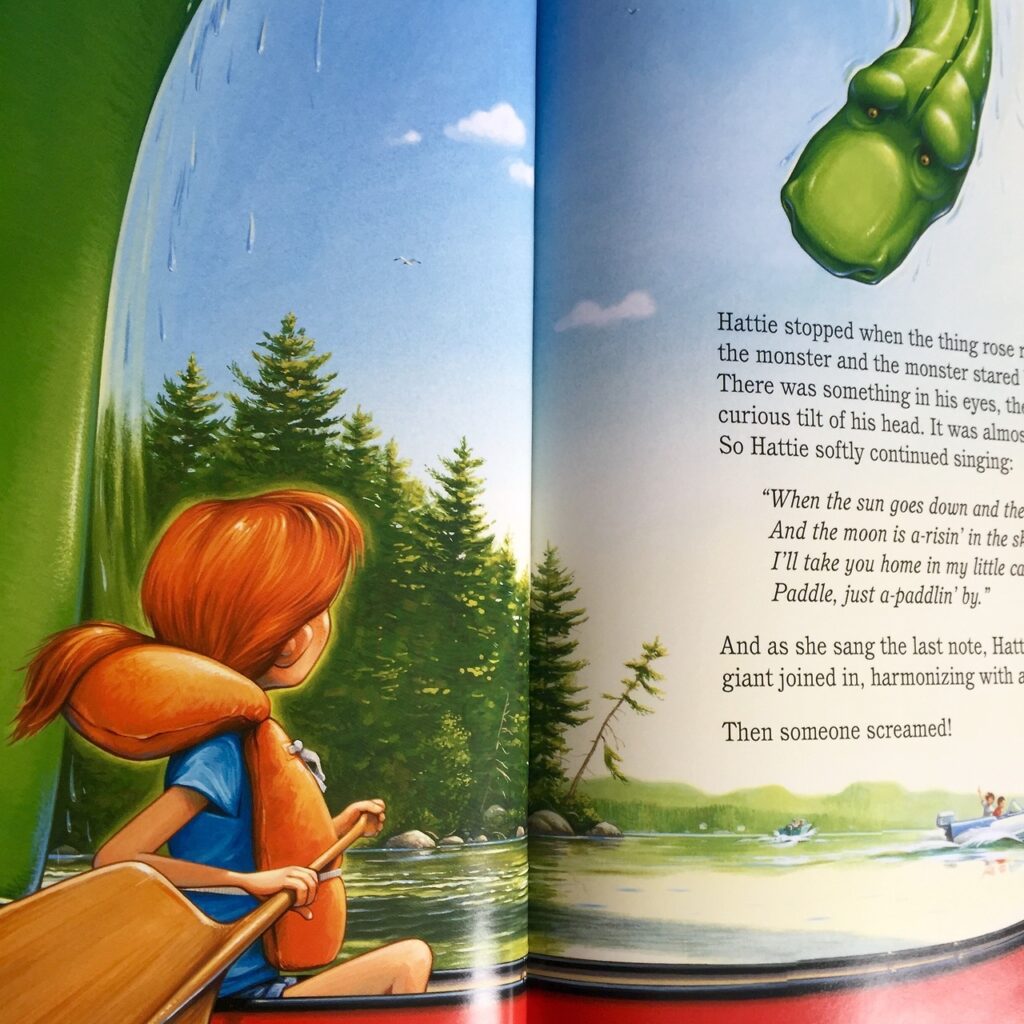

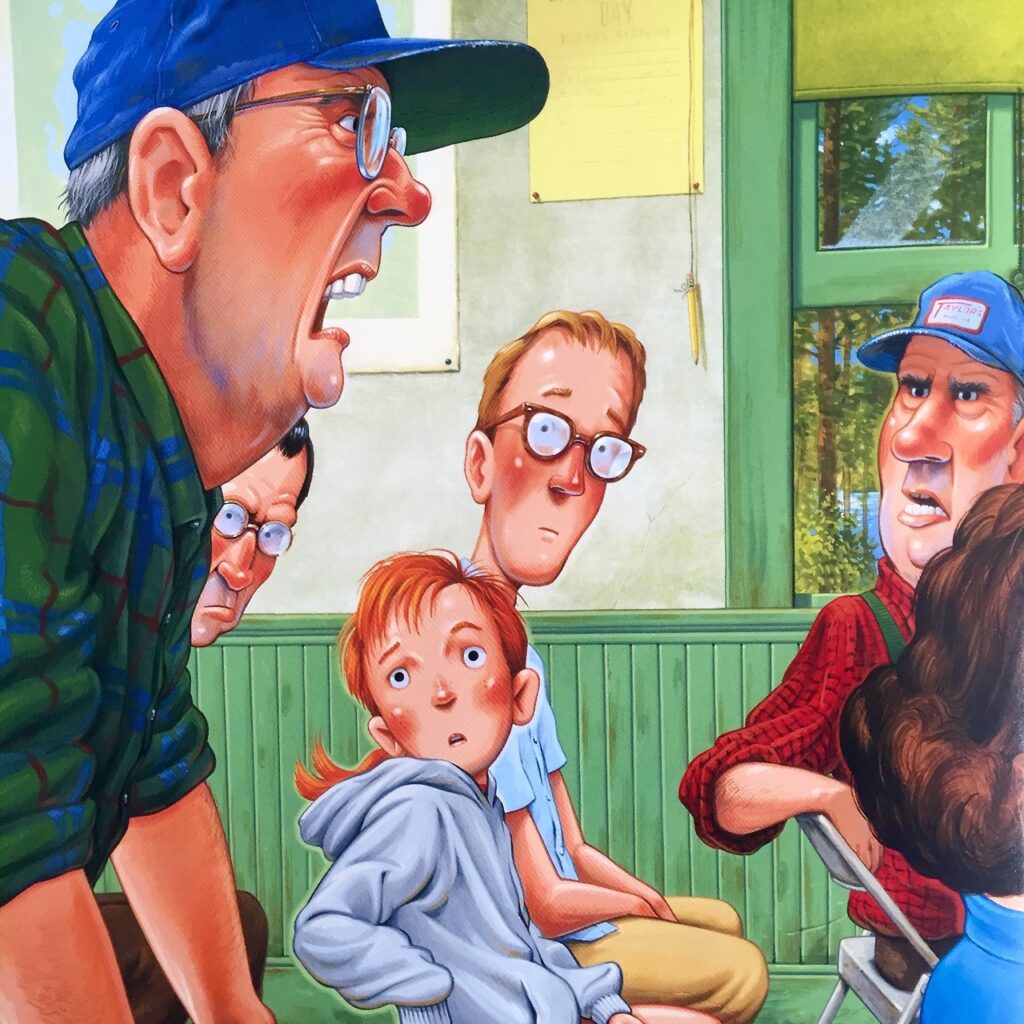
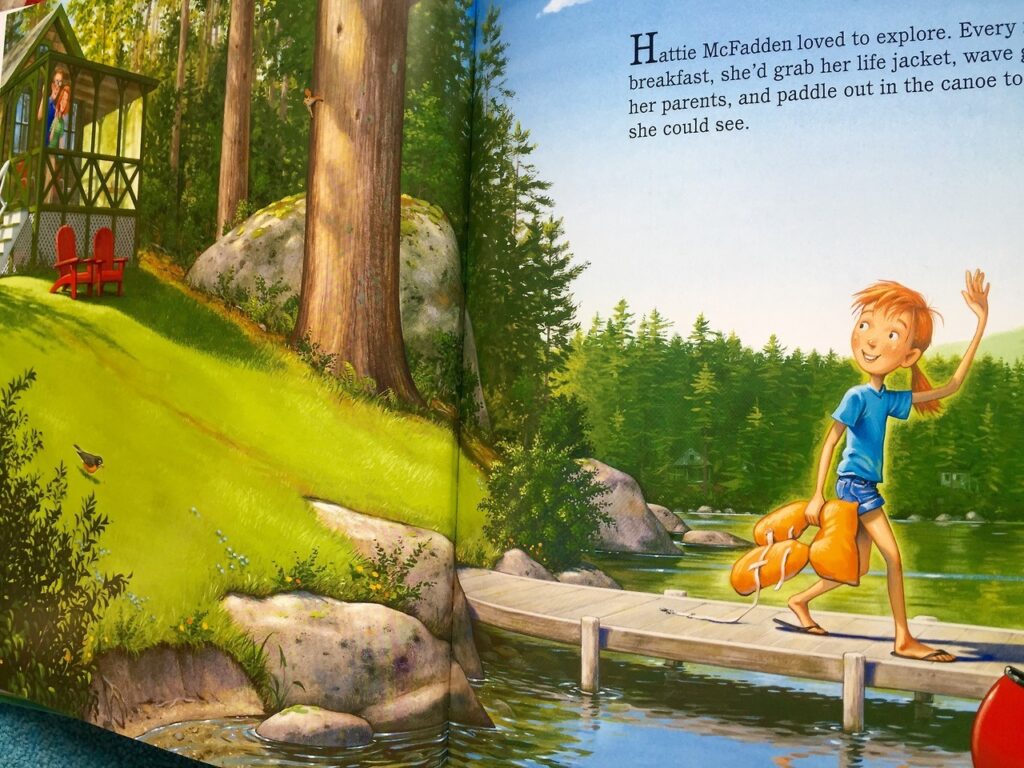

Hattie & Hudson
by Chris Van Dusen
Candlewick Press
2017, 40 pages, 10.1 x 0.4 x 11.7 inches, Hardcover
Hattie & Hudson is a beautiful book in every way. When Hattie McFadden paddles out on the lake one summer morning for her daily dose of exploring, she is so happy, she begins to sing. “So come with me ‘cause there’s room for two, / We’ll be together, you and I. / Out on the lake in my little canoe, / Paddle, just a paddlin’ by.” Her calm, sweet song unexpectedly charms “a monster” at the bottom of the lake who can’t help but respond to the invitation. Though Hattie can see Hudson for who he really is, the townspeople are not so welcoming.
This story is a great in for getting kids talking about everything from persistence to profiling. Concepts of home and belonging, of loud, angry grownups acting out of fear, of power and voice all make it a book that works for many kids, on many levels.
Visually, Hattie & Hudson rivals Chris Van Dusen’s 2009 release, The Circus Ship, in its breathtakingly gorgeous Maine-inspired landscapes and achingly expressive Rockwell-meets-Pixar characters. But where The Circus Ship is silly and bouncy and quick, Hattie & Hudson uses the time (and space) needed to tell the story of a quietly righteous little girl and the power of friendship.
04/23/2422 April 2024
Bike Basics
Tools for Possibilities: issue no. 83
Once a week we’ll send out a page from Cool Tools: A Catalog of Possibilities. The tools might be outdated or obsolete, and the links to them may or may not work. We present these vintage recommendations as is because the possibilities they inspire are new. Sign up here to get Tools for Possibilities a week early in your inbox.
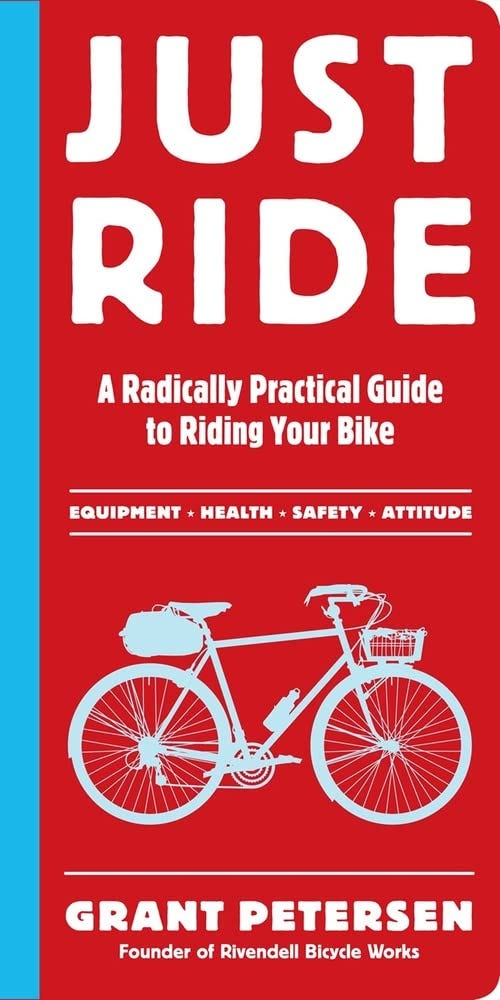
Bicycling sanity
This book returns the fun to recreational bicycling. Biking has been taken over by racing style; weekend riders and bike commuters imitate racers in their gear and approach. The author is a long-time bicycle maker, racer, and advocate, and in this manifesto he deflates common bicycling myths one by one. He argues you can wear ordinary street clothes, and that you will be less tired if you don’t use clip in cleats on your pedals, that the weight of the bike does not really matter, baskets are cool to have, plastic saddles are good enough, and so on. I’ve ridden bikes for 40 years, including long-distance touring and everyday commuting, and the common sense Grant Peterson preaches here is both absolutely true and refreshing. If biking seems less fun than it once did, read this. You’ll save a lot of money, and will enjoy riding more. — KK
- I say, wear underwear–even if it’s cotton. That goes against a powerful rumor mill that considers cotton underwear a no-no for any kind of ride beyond a ten-minute commute. The naysayers say it gets wet with sweat; the sweat makes your skin more vulnerable to chafing; the seams are uncomfortable at best and will cause saddle sores at worst.
- The only riders who benefit from clipless pedals are racers, and only because their pedals are so small and slippery. If you don’t ride tiny, slippery pedals, you don’t need stiff, cleated shoes.
The benefits of pedaling free far outweigh any real or imagined benefits of being locked in. They are as follows:Your muscles last longer. Moving your foot about the pedal shifts the load, even if slightly, to different muscles, and spreads the load around. Sprint up the hills on the balls of your feet and, on long-seated climbs, push with the pedal centered almost under your arch. It’s not a turbocharged, magic sweet spot, but it feels better and more natural, and you can’t do it if you’re locked in.You reduce the chance of a repetitive stress injury, because your feet naturally move around more, changing your biomechanics.You get off and on easier at stoplights; there’s no twisting to get out of your pedals, no fussing to get back in.You can walk in stores without walking on your heels. You can run! You aren’t handicapped by expensive and weird-looking shoes. - Whenever a rider gets hit and is being loaded, unconscious, into the ambulance, the driver who hit him will testify to the cops, “I swear, I didn’t see the dude.” If you’re looking brilliant and geeky, you’re more likely to be seen and less likely to get hit, and he won’t have that excuse.
- Grab the fork with your fingers, and use the heel of your hand to close the quick release. The convex side of the lever is labeled CLOSE, and should face outward when you’re finished.Closing the lever properly requires enough force to leave an impression on your hand.
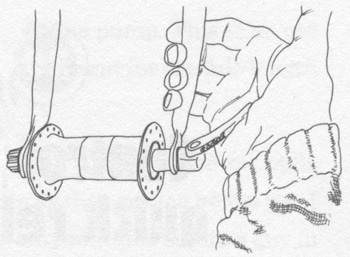
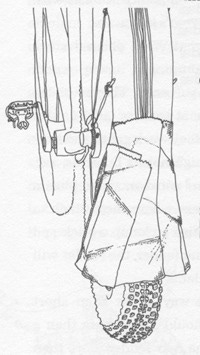
- On a stop-and-go commute, a red light at the wrong time instantly wipes out even a hundred-pound weight difference.On a descent, the heavier bike rider is faster.Light wheels accelerate faster than heavy ones, which helps when you’re taking off from a stop, but heavy wheels maintain more of their momentum than light wheels, which helps you keep your speed on rolling roads and trails.On twenty-five-mile club rides, when you and your club mates are close to the same fitness level, the pack sets the pace, and since you’re riding in a partial vacuum (not fighting the wind), it’s easy to keep up, even with heavier bike and body.
- It’s easy to buy tires with an extra layer of rubber, nylon, kevlar, or something else between the casing and tread to stop thorns. Every extra bit of protection adds weight that will always scare of racers and others under the spell, but for all-purpose Unracing rides, I like extra flat protection. Why not? I’ve fixed at least five hundred flats in my life, I’m really good at it, and I still hate it. Beef up my tires, thank you.
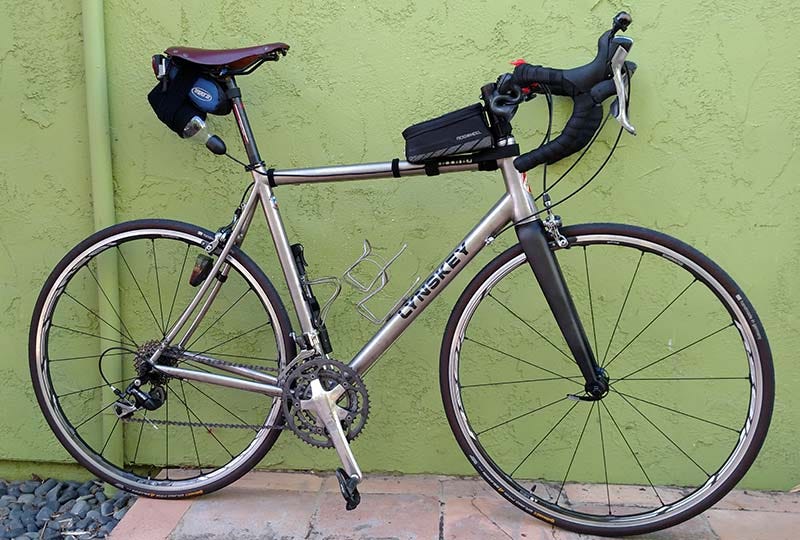
DIY guide to bikes & biking
Sheldon Brown’s Online Cycling Encyclopedia
Whether you’re looking to convert your road bike into a fixed gear or want to learn how a derailer functions, this site has all the info you could ever want — a giant glossary, bits of cycling history and plenty of specific instructions and photos.
His site has helped me purchase, repair and build two road bikes (my Gios Torino and a Tom Ritchey built Palo Alto).
I’ve seen, in the process, just how precise Sheldon’s attention to detail is. I had no idea that there was English and Italian threading. Sheldon has a chart that gives you the measurements for every BB out there, anything from French to Swiss. And I totally didn’t listen to his tip on Italian threaded bottom brackets and paid the price.
Even if you have no interest in working on your bike or going deeper than the basics of maintenance, this site can really boost your understanding of how a bike works (it has in my case) and even how to ride. There are great tips for beginners, including articles like “Everything You Wanted To Know About Shifting Your Bicycle’s Gears, But Were Afraid To Ask.” — Benjamin Gaffney
04/22/24ALL REVIEWS
EDITOR'S FAVORITES
COOL TOOLS SHOW PODCAST
WHAT'S IN MY BAG?
24 April 2024

ABOUT COOL TOOLS
Cool Tools is a web site which recommends the best/cheapest tools available. Tools are defined broadly as anything that can be useful. This includes hand tools, machines, books, software, gadgets, websites, maps, and even ideas. All reviews are positive raves written by real users. We don’t bother with negative reviews because our intent is to only offer the best.
One new tool is posted each weekday. Cool Tools does NOT sell anything. The site provides prices and convenient sources for readers to purchase items.
When Amazon.com is listed as a source (which it often is because of its prices and convenience) Cool Tools receives a fractional fee from Amazon if items are purchased at Amazon on that visit. Cool Tools also earns revenue from Google ads, although we have no foreknowledge nor much control of which ads will appear.
We recently posted a short history of Cool Tools which included current stats as of April 2008. This explains both the genesis of this site, and the tools we use to operate it.


